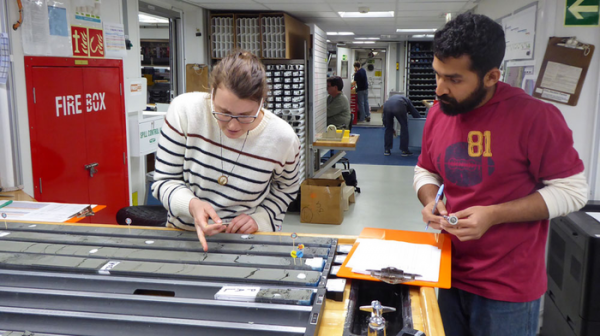Renaissance polymath Leonard da Vinci demonstrated that frictional forces slow down the motion of surfaces in contact. Friction, he determined, is proportional to normal force. When two objects are pressed together twice as hard, friction doubles.
“We see this principle with tectonic plate boundaries,” says Utah State University geophysicist Srisharan Shreedharan. “As surfaces slide against each other, we observe frictional properties, including frictional healing that describes the degree of fault restrengthening between earthquakes. However, we know little about how this phenomenon may affect future slip events, including earthquakes.”
He and colleagues Demian Saffer and Laura Wallace of the University of Texas at Austin, where Shreedharan was previously employed as a postdoctoral fellow, and Charles Williams of New Zealand’s GNS Science geoscience research institute, publish findings about ultralow frictional healing and slow slip events along the Hikurangi tectonic plate boundary in the Feb. 17, 2023 issue of the journal Science. The team’s research was supported by the U.S. Science Support Program International Ocean Discovery Program (IODP) and the New Zealand Ministry of Business, Innovation and Employment Endeavour Research Fund.
Read more at: Utah State University
From left, geoscientists Annika Greeve of Utrech University and Srisharan Shreedharan of Utah State University examine core samples aboard the IODP research vessel JOIDES Resolution near New Zealand. Shreedharan and colleagues published findings from data collected on the ocean expedition in the journal 'Science' Feb. 17, 2023. (Photo Credit: IODP TAMU)


